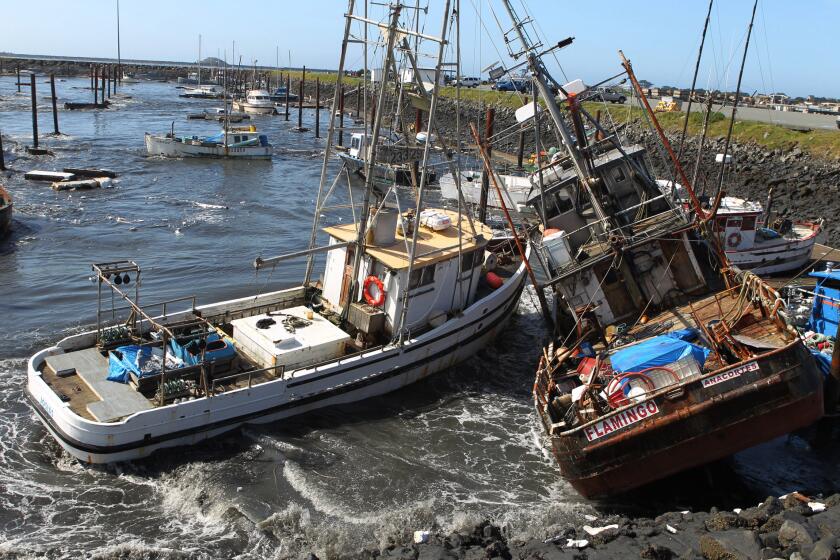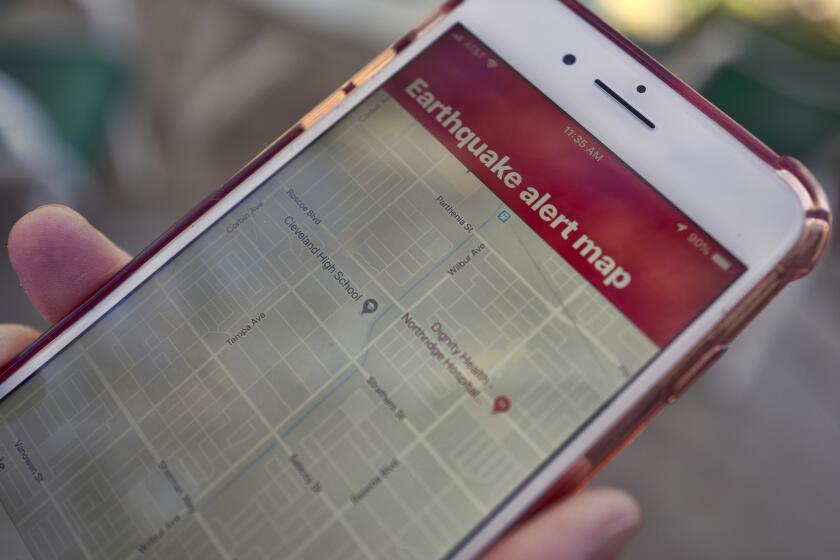Ocean Researchers Hope New Drill Will Aid Deep-Sea Study
- Share via
SEATTLE — Oceanographers hope to learn more about the structure of the Earth with the help of a new portable drill to bore holes in the ocean floor.
“It’s a tool that we’ve needed badly,” said Don Pryor, part of a federal team exploring the economic potential of the ocean floor. “This new drill will give us the opportunity to get cores from the deep sea, which we simply have had no means of getting before.”
The new drill, to be built in August, takes advantage of state-of-the art mining technology and laboratory drilling techniques. It can operate as deep as 18,000 feet and was designed to be handled with a 0.68-inch cable, standard on research ships, that is strong enough to lift the one-ton rig. Placement will be controlled by a sonic-navigation network and a remote TV camera.
$500,000 in Grants
The drill was developed by Mike Williamson, a marine consultant, who got a small National Science Foundation grant in 1982 for preliminary designs. Five subsequent attempts to finance a prototype failed but a sixth, with University of Washington oceanographer Paul Johnson, won a $400,000 grant from the NSF and another $100,000 from the Office of Naval Research.
The prototype will drill a precisely oriented, 1 1/2-inch hole 10 feet into seabed rock; the next stage would be a drill that could secure a 160-foot core.
Scientists are also looking at uses for the holes the drill will leave behind. For example, seismologists may place instruments, firmly attached to the hole’s rock sides, to detect ocean-bottom earthquakes.
Conventional Effort
The current conventional deep-sea research-drilling effort, managed by Joint Oceanographic Institutions for Deep Earth Sampling, lowers drilling pipe from a well in the bottom of a specialized vessel.
The new drill, which can be lowered from any ship, will be “smarter” than drills that cannot be adjusted from the surface once they are running. Pryor, part of a U.S. Geological Survey-National Oceanic and Atmospheric Administration project to map the United States’ economic zone extending 200 miles offshore, said, “Portability is the real merit of this new drill, and the fact that it will be relatively inexpensive compared to bringing in the drilling ship, probably less than one-tenth the cost.”
More to Read
Sign up for Essential California
The most important California stories and recommendations in your inbox every morning.
You may occasionally receive promotional content from the Los Angeles Times.









